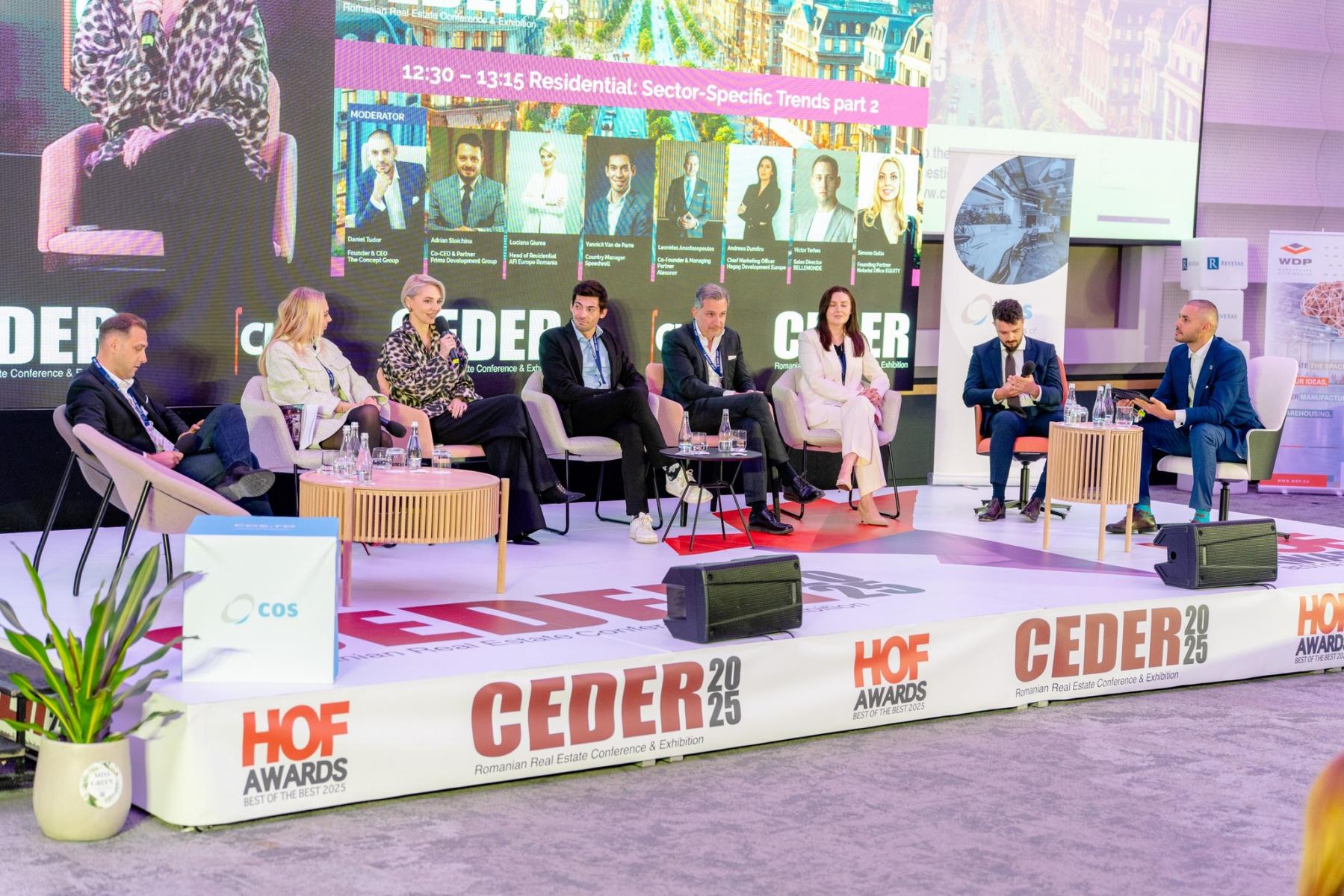2025-07-08
residential

Discussions among industry experts during the “Sector-Specific Trends part 2” panel held at CEDER 2025 revealed that, while the general market may face fluctuations, success and strategy often lie in diversification and in the details of specific developments. Andreea Dumitru, Chief Marketing Officer at Hagag Development Europe, highlighted their diverse residential portfolio covering from middle-market products to premium and upper-premium developments, noting significant pre-sales figures across different segments. She stated, for instance, that “we have about 50% out of the over 400 units in H Pipera Lake reserved. And now that we have received the building permit, we are signing the pre-SPAs as we speak. This means that over the next couple of months, all these reservations will turn into pre-sold units.” There is also strong demand in other areas, with about 160 units reserved or pre-sold for their middle market H East Residence project in Obor. In the upper-premium segment, even though two ongoing projects under development in the Primăverii neighbourhood are “on hold” due to the urbanistic situation, there is a list of 70 people that are waiting for just 53 apartments. This indicates there is serious demand for the right product. Leonidas Anastasopoulos, Co-Founder & Managing Partner of Alesonor, spoke about the success of their sustainable Amber Forest project, which has been “a tremendous commercial success over the years”, reporting that they are 85-86% pre-sold and they have started to deliver. He emphasized building a comprehensive living environment, explaining that covering the needs of the client means building by “focusing on all the elements that a functional neighbourhood should have: […] the school, […] the sports club, […] the agora”. This focus on creating a community and addressing the specific needs of families, including areas “where kids can grow up and can play around”, is a key strategy for them. Regarding the premium market, Victor Terheș, Sales Director at Bellemonde, discussed their project in Pipera, noting their ability to adapt to buyer needs and the boost in confidence once construction is visible. He explained that this focus on a specific, higher-end location is partly driven by the challenges faced in central Bucharest and stated that “building […] in Pipera is […] a natural way for keeping our colleagues in plug”, due to permits being on hold elsewhere. He also mentioned their plans to enlarge the project: “we'll nearly double it or more than that”. Beyond traditional sales, the built-to-rent segment is gaining traction. Luciana Giurea, Head of Residential at AFI Europe Romania, detailed their AFI Home North project, aiming to replicate success seen in other European markets. She revealed their ambitious goal to “take this project and to have it in every sector of Bucharest in the following years”. She emphasized the unique value proposition of this niche, stating that “even if [the tenants] are not owning the home in which they are staying, we believe they need to own the time. They need to own the relationships that they are going to make inside the like-minded community of professionals. We believe that they need to own a quality of life that we are very happy to offer to them.” Diversification across locations and asset classes also serves as a stability strategy. Yannick Van de Parre, Country Manager at Speedwell, highlighted their approach: “We are now in Poland, we are in Timișoara, we're doing offices, we're doing residential, we're doing retail, we're also doing industry. So, even if an asset class or a city is underperforming, it gives us the breathing room and the stability to keep on constructing”. These examples demonstrate that while the market faces challenges, successful developers are navigating it through strategic project development, focusing on specific market niches, and delivering value and quality within those segments.

